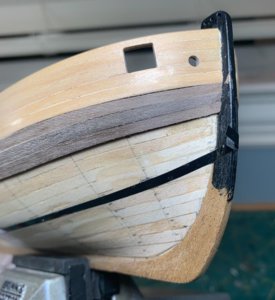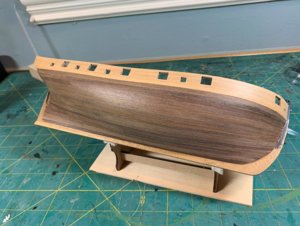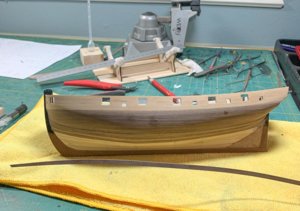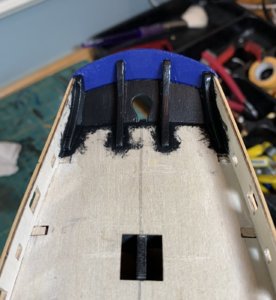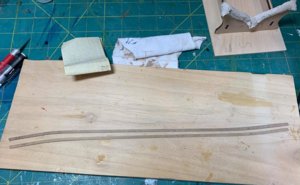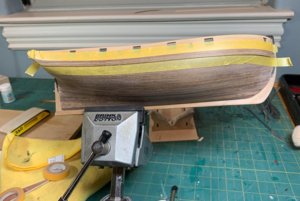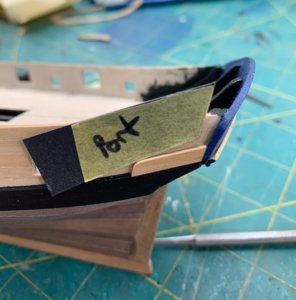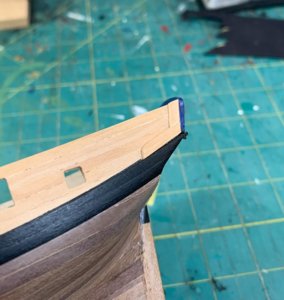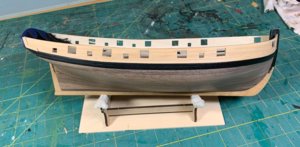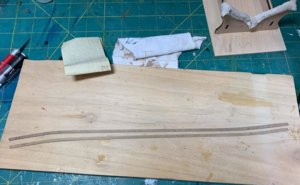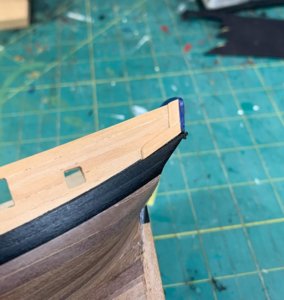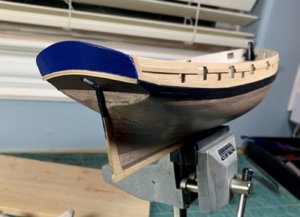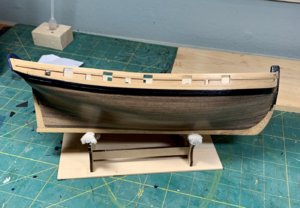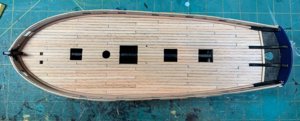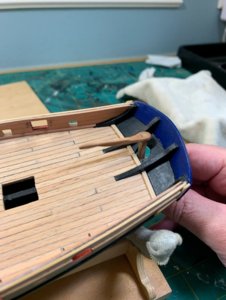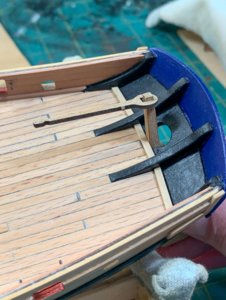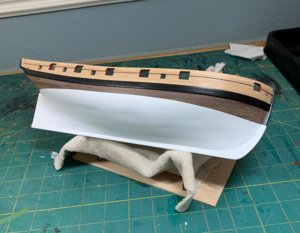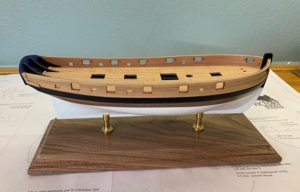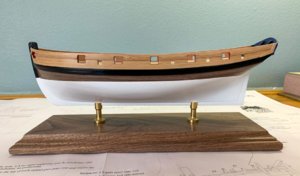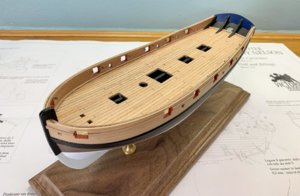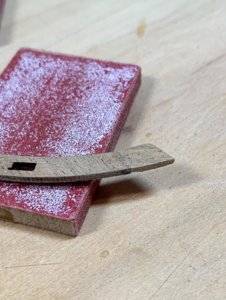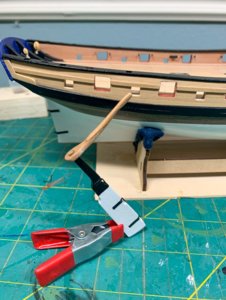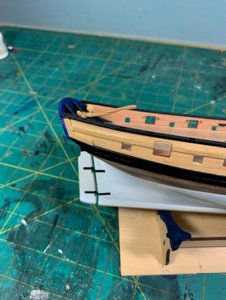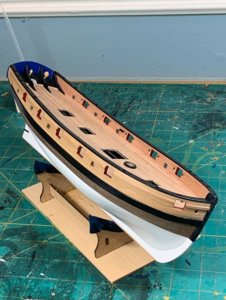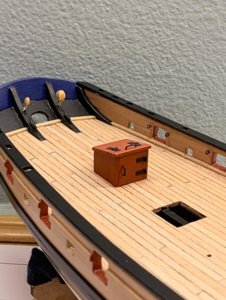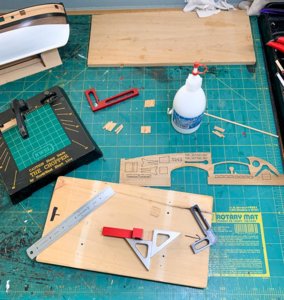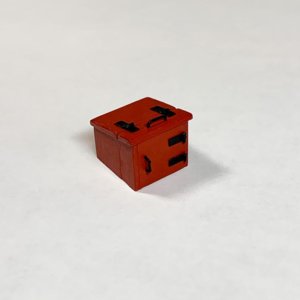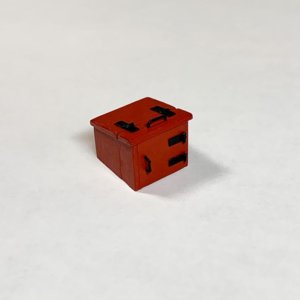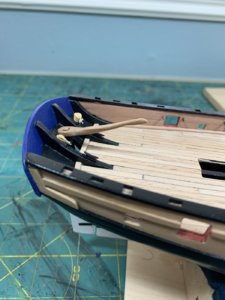So here’s where I am - starboard complete. I’m pleased with the result. The ship has one coat of water based Matte poly just to keep it clean and tight, it will be sanded before being painted later.
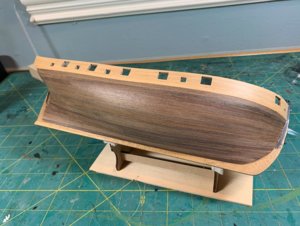
To be clear, I take no credit for this method. I researched a new way of planking that fit my style of working (fast, without battens and without pins, using CA) and found it in Chuck Passaro’s method. I followed the .pdf he has posted on Model Ship World at
Lining Off your hull for planking.pdf I’ve learned there is some tension between the two sites, but I’m not part of that. I enjoy reading and sharing on both. There are also some videos including a recording of Chuck at a workshop - in that video he does things much simpler maybe less precise than in the .pdf that get the same result, I used those, no french curves for me. As it is it took me several days to get this small ship planked.
I’ve always done something similar with measuring and determining where to begin tapering, but it was a lot more ad-hoc. That part of my process has worked, I’m built some nice ships doing it. What is really different and game-changing for me is his plank bending method. I’m not going to go through it all in detail, you can read the .pdf, but I want to share a bit of it in hopes that a beginner might be inspired enough to learn more. The headline is no soaking and no twisting to fit.
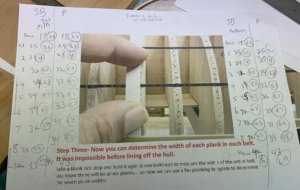
First there is taking the time to do the planning - using tick strips (I just stuck a few on here for the photo) to take measurements at each bulkhead, counting the number of strips at the widest point and converting that to the ships hull at bow and stern. Chuck used fan strip, I prefer a calculator. If its seven 4mm strips at midships, using the tick strips to get distance I determined it has to become 2.5mm at the bow. This is tedious work, but worth it. Because it was here I learned my first error in my old ways. I was starting the taper too soon, I learned through measuring in detail that I didn’t need to taper (on this particular hull, it will obviously vary) until midway between bulkhead 2 and 3, and not at all to the stern. That got me a much more even and consistent look.
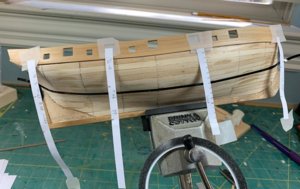
Dividing the hull in half and determining the “line” I wanted the planks to follow (3 or 4 bands for a bigger model) allowed me to be more precise and get a cleaner look instead of ad-hoc figuring it out as I went.
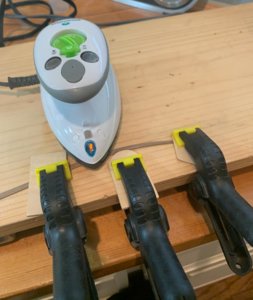
All well and good, but here’s the fun part - quick and easy “bending the wrong way” using my personal plank bending station. Consisting of a raised board three clamps, three pieces of thin wood - two for preventing clamp marks and one to set the point of the curve, and one inexpensive steam travel iron.
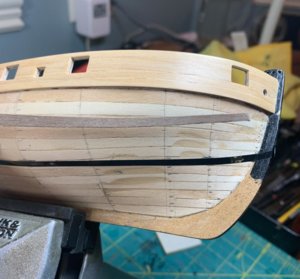
Placing the strip on the hull at the beginning of the taper point and bending it to the bow with my fingers (no glue) produces a curve, the apex of that curve is the bending point. Mark it and put that center on the middle of the clamp then gently pull down and clamp on both sides. I broke only one plank, the strip wood had more elasticity than I would have thought. I DID NOT soak the strips in water. I put my finger in water and ran it over the wood then “ironed” the strip for several seconds. Let it cool for a minute and you have a curved plank.
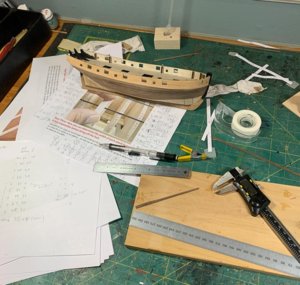
I then just kept track of my measurements, I did redo them a few times on the lower half, 4mm planks aren’t a perfect fit so I ripped two to 3mm each to fill the gap (and not have one super skinny). It still was a lot easier adjusting for the final pieces. Most importantly the planks, while it looks odd in a two dimensional photo, fit flush to the hull and its double curve by adding the downward bend in the tapered plank. Again, no soaking, no bending no twisting. I used drops of CA, first gluing it tight at the bow, then just 1-2 bulkheads at a time. I had roughed up the 1st planking with 100 grit sandpaper to help with adherence.
The message is plan the work, do the work, take your time, make adjustments when needed, don't force wood to be something it's not, help it learn to be a hull plank and not a strip of wood.
Here I will admit my major error, or the error the instructions led me to do - that’s attaching the sternpost when I built the frame. It would all be so much easier at the stern to not install that until after the second planking. It wasn’t a show-stopper, it just made fitting the lower band of planks harder since they had to be cut to fit precisely at the stern post. On my next model I’ll not install the sternpost until after all the planking is done. I knew that…it was one of those things I forgot in my three year layoff.
I hope I'm adding some value here and that someday it will help a beginning builder. The Lady Nelson isn't a sexy build, but it requires all the basics necessary for any model no matter is Nelson or Cochrane sailed on it or not.
On to the next step…

